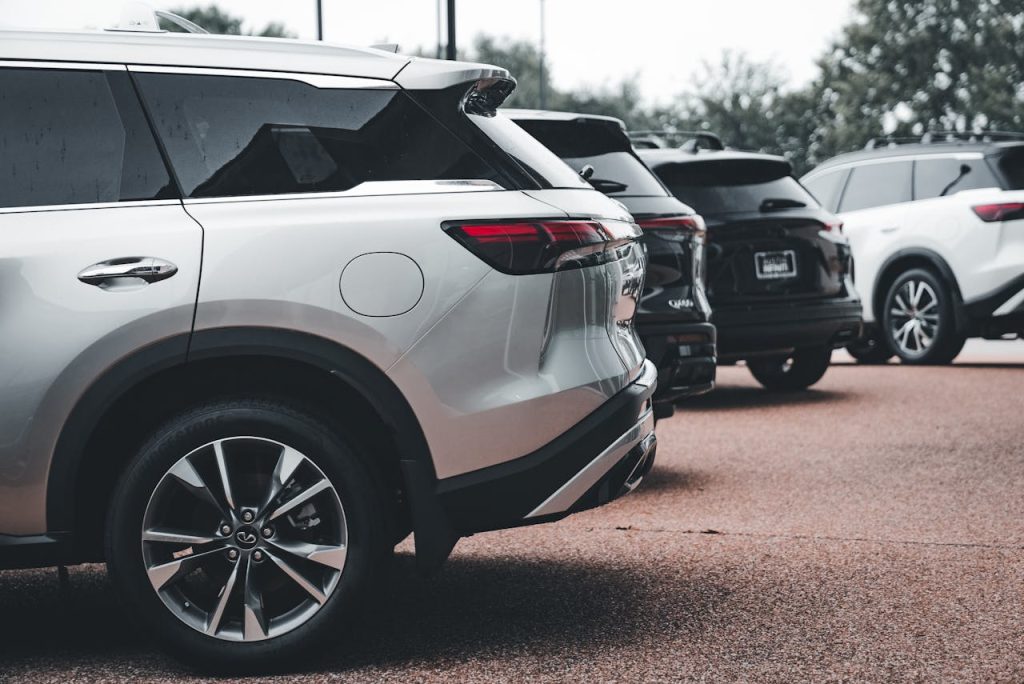
Car buyers expect new models to be safer every year. But for 2025, some car brands are quietly removing safety features that many drivers rely on. This shift isn’t always obvious in the marketing materials or at the dealership. It matters because these changes can affect your safety, your insurance rates, and even your car’s resale value. If you’re planning to buy a new car soon, you need to know what’s missing and how it could impact you. Here’s what’s really happening with car safety features in 2025—and what you can do about it.
1. Automatic Emergency Braking Is No Longer Standard
Automatic emergency braking (AEB) has saved lives. It helps prevent crashes by stopping the car if you don’t react in time. For years, more brands have made AEB standard on most models. Now, some are making it optional or removing it from base trims. This means you might have to pay extra for a feature that used to come with the car. If you’re shopping for a 2025 model, check the spec sheet. Don’t assume AEB is included. Ask the dealer to show you which trims have it. If you skip this step, you could end up with a car that’s less safe than last year’s version.
2. Blind Spot Monitoring Is Getting Cut
Blind spot monitoring helps you change lanes safely. It alerts you if there’s a car in your blind spot. For 2025, several brands are dropping this feature from entry-level models. Some are only offering it in expensive packages. This move saves the manufacturer money, but it puts more risk on you. If you drive in heavy traffic or on highways, blind spot monitoring can make a big difference. Before you buy, look for this feature on the window sticker. If it’s not there, ask if you can add it. Sometimes, it’s only available on higher trims, so you may need to budget more.
3. Rear Cross-Traffic Alert Is Missing on Some Models
Rear cross-traffic alert warns you if a car or person is behind you when you’re backing up. It’s especially useful in parking lots. For 2025, some brands are quietly removing this feature from their cars, even on models that had it last year. This change isn’t always obvious. You might not notice until you’re in a tight spot and realize you don’t have the warning. If you have kids or often park in busy areas, this feature is important. Double-check the car’s safety list before you buy. Don’t rely on last year’s brochure or online reviews—they may be out of date.
4. Lane Keeping Assist Is Now Optional
Lane keeping assist helps you stay in your lane. It gently steers the car if you start to drift. This feature has become common, but for 2025, some brands are making it optional or only available in higher trims. If you drive long distances or get tired on the road, lane-keeping assist can help prevent accidents. Without it, you’re more likely to drift out of your lane, especially on highways. When you shop for a new car, ask if lane-keeping assist is included. If not, see if you can add it as an option. It’s worth the extra cost for many drivers.
5. Fewer Airbags in Base Models
Airbags are a basic safety feature. But some 2025 models have fewer airbags than before, especially in base trims. Brands are cutting side or knee airbags to save money. This change can increase your risk of a crash. More airbags mean better protection for you and your passengers. Before you buy, count the airbags in the car. Ask the dealer to show you where they are. If the car has fewer airbags than you expected, consider a different trim or model. Your safety is worth it.
6. Adaptive Cruise Control Is Getting Harder to Find
Adaptive cruise control keeps a safe distance from the car ahead. It’s great for highway driving and stop-and-go traffic. For 2025, some brands are removing this feature from lower trims or making it part of expensive packages. This means you might have to pay more for a feature that used to be standard. If you do a lot of highway driving, adaptive cruise control can reduce stress and help prevent accidents. Check if it’s included before you buy. If not, ask about upgrade options.
7. Fewer Standard Safety Features Mean Higher Insurance Costs
When cars have fewer safety features, insurance companies notice. They may charge higher premiums for cars that lack features like AEB, blind spot monitoring, or extra airbags. Over time, this can cost you more than the price of the missing feature. Before you buy a 2025 model, get an insurance quote. Ask how the car’s safety features affect your rate. You might find that paying extra for a safer trim saves you money in the long run.
8. Why Are Brands Cutting Safety Features?
Car makers are under pressure to keep prices down. Supply chain issues and rising costs mean they have to make tough choices. Cutting safety features is one way to save money without raising sticker prices. But this shift puts more responsibility on buyers. You can’t assume a new car is safer just because it’s newer. Always check the safety features before you buy.
What This Means for Your Next Car Purchase
Car brands are quietly cutting safety features for 2025 models. This trend affects your safety, your wallet, and your peace of mind. If you’re shopping for a new car, don’t assume it has all the features you want. Read the fine print. Ask questions. Compare trims. Make sure you’re getting the safety features that matter to you. Your safety is too important to leave to chance.
Have you noticed missing safety features on new cars? Share your experience or thoughts in the comments.
Read More
Financial Impacts of Skipping Preventative Medical Care
How Your Shopping Cart Is Being Used to Profile Your Finances
The post Several Car Brands Are Quietly Cutting Safety Features for 2025 Models appeared first on The Free Financial Advisor.







